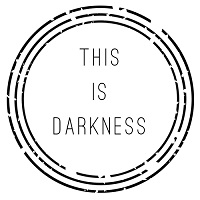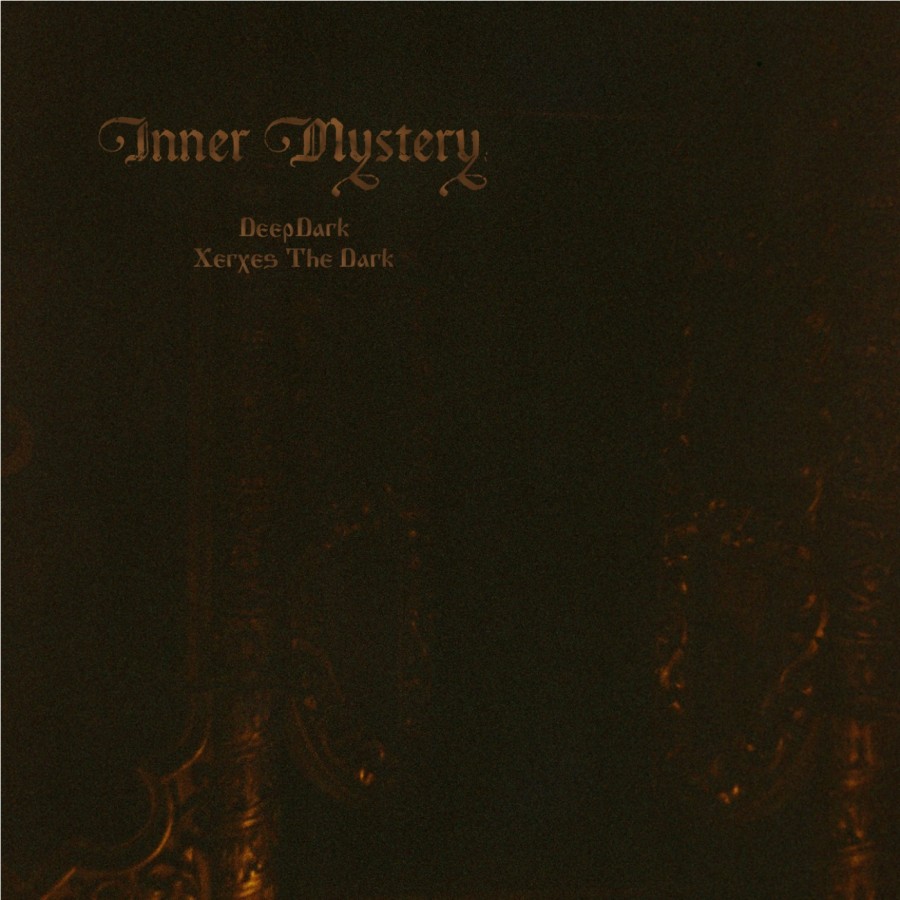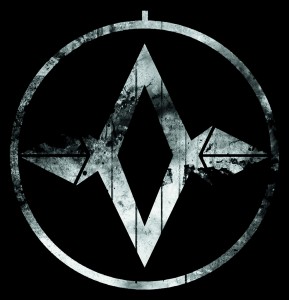Artist: Elegi
Album: Bånsull
Release date: 10 February 2017
Label: Dronarivm
Cover-art: Eric Lacombe
Tracklist:
01. Gejnganger
02. Hvor Her Er Ødselig
03. Full Av Tomhet
04. Mørtemann
05. Vemod
06. K-141
07. Messe
08. Elevte Time
09. Fordum
“Bånsull” (in old Norwegian this word stands for “Lullaby”) from beginning to end reminds me of an old horror film. Not the American classics from the Universal company, like Dracula or Frankenstein, but rather European, perhaps German, expressionist. Murnau’s Nosferatu is not a bad point of reference, but I see something more like C. T. Dreyer’s Vampyr. Slow, pale and spooky, but rather in a psychological aspect. After all, the album’s motto is a quote from E. A. Poe: “I became insane, with long intervals of horrible sanity”.
It’s Tommy Jansen’s third album, but the first since his 8 year hiatus. The first two were released by Miasmah, known for producing CDs by such artists like Svarte Greiner, Jasper TX, Rafael Anton Irisarri or my multi-talented fellow countryman Jacaszek. All of them follow their own original way, but also have something in common, creating ambient music which is accessible but has a strong experimental touch and is generated with the help of real classical instruments. Elegi was no different then and is no different now, even though he changed the label and Bånsull is out via Dronarivm Records from Russia.
There is no modern horror here, unlike some Cryo Chamber offerings which, in many cases even when recalling the old and rusty atmospheres, still sound very modern and high-tech. Which doesn’t necessarily have to be a bad thing, as it may be treated as the second decade of the XXI century look – or reinterpretation – of such atmospheres which for many will never get old or outdated. As if they pose a question: how would it sound when made with all the technological possibilities we have in 2016 or 2017. Elegi works otherwise. It really sounds like it’s taken from some recording from 80 years ago. You are aware of electronic or digital treatments and manipulations – there’s no way to make a contemporary ambient album without these, at least at some stage of production, you simply can’t avoid it. But Tommy manages to make you forget about it, the laptop, the software and all that stuff. You just see the old piano and violin covered in spider webs and the spectres of grave old men in black suits playing mournful tunes. Even when Tommy refers to events from a not so distant past (I assume that “K-141” deals with the tragic story of the Russian Kursk submarine, which took place in 2000), you can’t escape that feeling.
Speaking of the Cryo Chamber label, in the previous paragraph I wrote “in many cases”. Not without reason, because paradoxically I notice a strong link with an artist recording for that label. It is Cities Last Broadcast, which in quite a similar manner makes me think of broken patephones, decaying sad family photos, black and white films on old reels and European cities in the 30s, at dawn, covered with fog. Ambient vintage at its best. I know, it’s a trendy term, but I can’t help that it fits here like anywhere else.
Written by: Przemyslaw Murzyn






 The first half of the album comes from DeepDark. Here we can expect to hear a brilliant display of rumbling dronework complemented by field recordings. There is a primal nature to these tracks. A dark nature which terrifies listeners from the shadows, never emerging to show its true face. The opener, “Alone”, is probably my favorite work yet by DeepDark. There are many nods to the genre’s ancestry here. The cathedralic chanting vocals are reminiscent of early raison d’etre, while the simplistic and repetitive piano section screams of Burzum in his heyday. This is topped off with field recordings of a thunderstorm which brings the whole thing together into a beautifully dark and sinister force.
The first half of the album comes from DeepDark. Here we can expect to hear a brilliant display of rumbling dronework complemented by field recordings. There is a primal nature to these tracks. A dark nature which terrifies listeners from the shadows, never emerging to show its true face. The opener, “Alone”, is probably my favorite work yet by DeepDark. There are many nods to the genre’s ancestry here. The cathedralic chanting vocals are reminiscent of early raison d’etre, while the simplistic and repetitive piano section screams of Burzum in his heyday. This is topped off with field recordings of a thunderstorm which brings the whole thing together into a beautifully dark and sinister force. Moving into the second half of the album, Xerxes The Dark provides listeners with a more industrial leaning set of sounds. The thematic elements still hold true for both halves of the album, but XTD takes on a more hollowed synthetic sound. As if we are wandering through the remnants of a dilapidated factory, which still holds the energy of sinister deeds long forgotten. On the track “Transmute of Mind” XTD is looking to evoke a strong and direct reaction from listeners. The track is brooding and bellowing yet keeps a conservative sense of restraint on the overall soundscapes. A third of the way through this eleven minute track a wall of harsh white noise violates the senses of the listener. This is the dark ambient equivalent of a horror film jump-scare if I’ve ever encountered one! The first time I heard it, I frankly had no idea what to make of it. I was looking around the room to figure out what had happened to elicit such a cacophony of noise. On the numerous proceeding playthroughs I continued to jump at this moment, but definitely appreciated the concept for the reaction it drew.
Moving into the second half of the album, Xerxes The Dark provides listeners with a more industrial leaning set of sounds. The thematic elements still hold true for both halves of the album, but XTD takes on a more hollowed synthetic sound. As if we are wandering through the remnants of a dilapidated factory, which still holds the energy of sinister deeds long forgotten. On the track “Transmute of Mind” XTD is looking to evoke a strong and direct reaction from listeners. The track is brooding and bellowing yet keeps a conservative sense of restraint on the overall soundscapes. A third of the way through this eleven minute track a wall of harsh white noise violates the senses of the listener. This is the dark ambient equivalent of a horror film jump-scare if I’ve ever encountered one! The first time I heard it, I frankly had no idea what to make of it. I was looking around the room to figure out what had happened to elicit such a cacophony of noise. On the numerous proceeding playthroughs I continued to jump at this moment, but definitely appreciated the concept for the reaction it drew.

 Where Winterblood truly captures my interest is in the way he seems to effortlessly meander between dark ambient and that ever growing, often notorious, genre of dungeon synth. Winterblood takes on a minimalistic approach to his music. Most often incorporating little more than a layer or two of synthesizer. This stripped-down approach helps promote those feelings of isolation in the cold. In the past he has also incorporated field recordings, bringing that biting winter wind right into the mix.
Where Winterblood truly captures my interest is in the way he seems to effortlessly meander between dark ambient and that ever growing, often notorious, genre of dungeon synth. Winterblood takes on a minimalistic approach to his music. Most often incorporating little more than a layer or two of synthesizer. This stripped-down approach helps promote those feelings of isolation in the cold. In the past he has also incorporated field recordings, bringing that biting winter wind right into the mix. As the album moves into its second half, “II”, Winterblood adds a bit more complexity to the work. A continuation of “I”, we still hear that underlying foundation of a single deep note, the same crystalline notes layered on top. But, the dynamics of these elements are increased here on this second half. The bass has a bit more fluctuation, the lead synth ups its pace. While still holding us in that cold winter trance, the second half of the album has just enough of a shift to renew the listener’s attention and interest, just when that renewal may be most needed.
As the album moves into its second half, “II”, Winterblood adds a bit more complexity to the work. A continuation of “I”, we still hear that underlying foundation of a single deep note, the same crystalline notes layered on top. But, the dynamics of these elements are increased here on this second half. The bass has a bit more fluctuation, the lead synth ups its pace. While still holding us in that cold winter trance, the second half of the album has just enough of a shift to renew the listener’s attention and interest, just when that renewal may be most needed.


 Meditations on Giving up Completely is quite possibly the best work to date by The Vomit Arsonist, bringing forth all the forms of aural assault that Grant has honed over the years. The result is close to perfection of the death industrial sound.
Meditations on Giving up Completely is quite possibly the best work to date by The Vomit Arsonist, bringing forth all the forms of aural assault that Grant has honed over the years. The result is close to perfection of the death industrial sound. Meditations has a cinematic edge which flows through it. One gets the idea that Grant sees himself as a bystander in the final war, taking cover in the basement as the world tears itself to pieces just outside his door. Yet at the same time, it’s also easy to imagine him as taking to the frontline in this battle. His vocals shouting orders to his followers as an apocalyptic destruction ensues. This dichotomy could be intentional or subliminal, he could be characterizing the views of two seperate people, or showing his own mixed emotions with regards to fighting an internal or external battle.
Meditations has a cinematic edge which flows through it. One gets the idea that Grant sees himself as a bystander in the final war, taking cover in the basement as the world tears itself to pieces just outside his door. Yet at the same time, it’s also easy to imagine him as taking to the frontline in this battle. His vocals shouting orders to his followers as an apocalyptic destruction ensues. This dichotomy could be intentional or subliminal, he could be characterizing the views of two seperate people, or showing his own mixed emotions with regards to fighting an internal or external battle. The Vomit Arsonist should find the acceptance of many varied listener bases with this release. For death industrial fans, there is everything to love about this sonic assault. There is very little downtime and from the vocals to the booming bass The Vomit Arsonist delivers with perfection. Dark ambient fans of the strictest sense will find Meditations to be a bit overwhelming and a bit too loud, but those on the periphery who love blending of styles and a harsher edge to their soundscapes will welcome Meditations happily. Even moving into the power electronics and industrial scenes, Meditations should hold its own, standing up to the greatest of critiques.
The Vomit Arsonist should find the acceptance of many varied listener bases with this release. For death industrial fans, there is everything to love about this sonic assault. There is very little downtime and from the vocals to the booming bass The Vomit Arsonist delivers with perfection. Dark ambient fans of the strictest sense will find Meditations to be a bit overwhelming and a bit too loud, but those on the periphery who love blending of styles and a harsher edge to their soundscapes will welcome Meditations happily. Even moving into the power electronics and industrial scenes, Meditations should hold its own, standing up to the greatest of critiques.
